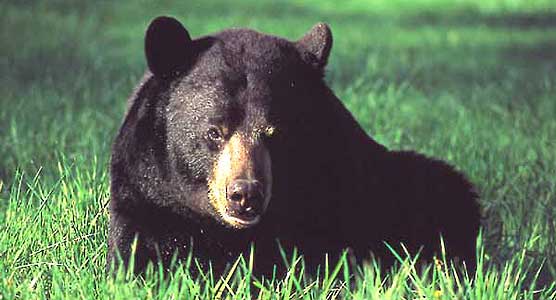A very interesting poster caught my eye Tuesday as I was walking into a cafe located in the Big Thicket area of Southeast Texas. The poster warned hunters of the similarity — in profile at least — of feral hogs and black bears.
Such a notification would not likely raise an eyebrow in other parts of the U.S., but here in the pine and hardwood river bottoms of eastern Texas it is evocative of a bygone time when those woods were full of bears. That was a period way before my time. By the 1940s the Louisiana Black Bear was considered “extirpated” from Texas, according to the Black Bear Conservation Coalition. That group is dedicated to restoration of the Louisiana Black Bear to its original habitat. The state listed the black bear as “endangered” in 1987 and upgraded to “threatened” in 1996. The mammals were anything but threatened in the area a bit more than 100 years before that last biological designation.

Texas Parks and Wildlife Department information on the black bear noted that during a two-year period in the mid-1880s, two hunters in Liberty County were said to have killed more than 180 bears within a 10-mile radius of the Trinity River bottoms. A Hardin County bear hunter named “Uncle Bud” Brackin had 305 bear hides when he stopped hunting bears in 1887 because they became too scarce.
During the time I grew up in East Texas — during the 1960s and 70s — a bear sighting would be reported although such visual captures were probably as much legend as fact. I do remember in the late 60s or so that someone killed a bear, I believe, that was somewhere in the woods north of Deweyville in the south most part of Newton County. I remember hearing game wardens say that the bear probably had strayed across the Sabine River from a federal wildlife preserve in Southwest Louisiana’s Calcasieu Parish.
More bears have returned to East Texas though. One of my brothers set up a camera on a deer feeder and snapped a photo of one coming around recently. Other bears have been photographed that way as bears, despite what you see in toilet paper commercials, like to eat instead of going to the can all day. Some groups like the bear coalition want to see more bears. Such an effort faces a lot of obstacles, or so it would seem, the least of which would be people to whom bears would be unwelcome guests.
I suppose the biggest thing to take away here is from that warning poster I saw. It says hunters can mix up a bear profile with a wild hog. I guess some would say that is ridiculous but if you have ever seen any of the “pineywoods rooters” around here you would understand. Those can be some ginormous swine. Shooting a bear here in East Texas does not come cheap if you get caught either. One may face penalties of up to $10,000, additional civil restitution for what the bear is worth, jail time, and loss of all hunting privileges.
So, if you are hunting hogs out there, make sure it is a hog you are shooting and not a bear. Nor Bigfoot. He/its been known to roam around these parts too and he/it might not take to kindly to it being shot, if you know what I mean.

Spelling error report
The following text will be sent to our editors: